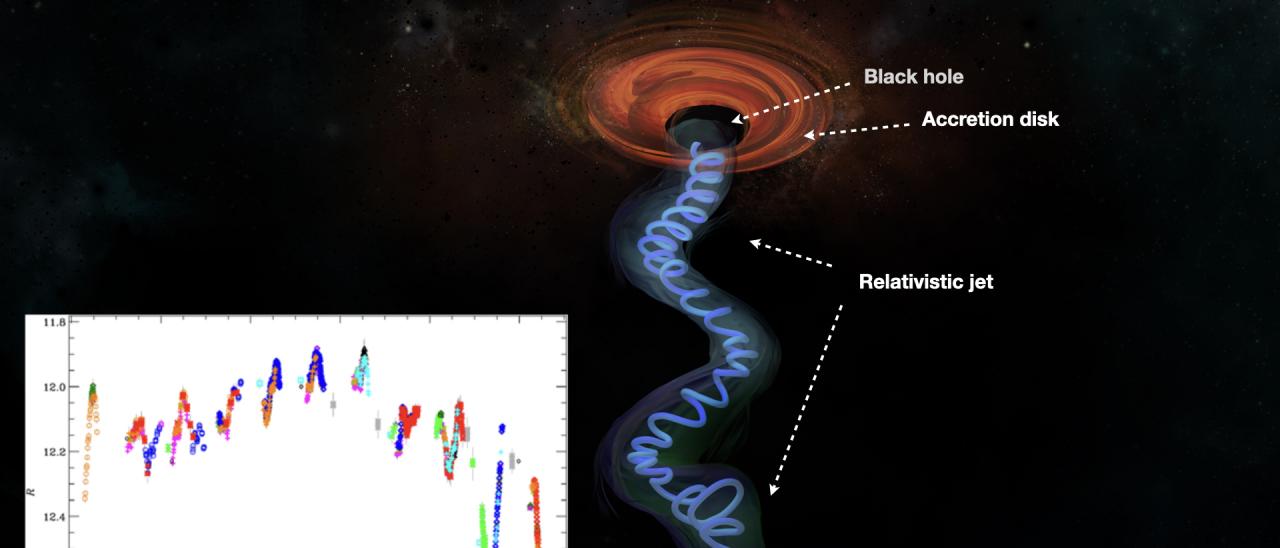Active galactic nuclei (AGN) consist of a supermassive black hole fed by the circumnuclear material close to the galaxy center. Around 10% of the AGNs develop a pair of jets that are launched to the interstellar medium at speed close to velocity of light. Blazars are observed when one of the jets points very close to our line of sight, which produce an extraordinary boosting of the emission by relativistic effects. Jets produce electromagnetic emission that varies rapidly and covers from radio waves to gamma rays. The observed light is mostly random without an apparent pattern. The source BL Lac, the blazar which names this class, exhibited a strong flare at multiple wavelength ranges, in the second half of year 2020. We have found that the optical light show Quasi-Periodic Oscillations (QPOs). The oscillation has a period close to 13 hours and persisted for about 1 month. This result comes from more than 15000 measurements obtained in red light (filter R), using 37 telescopes spread around the world. Moreover, the polarization of the light was also measured and showed the same QPOs pattern, mentioned above. The proposed explanation includes the formation of a kink in the jet, which twists the magnetic field provoking the brightness to oscillate. The magnetic field in the jet is expected to have a spiral pattern and can become unstable and twist, creating a kink. When the particles in the jet flow through the kink, the beaming of the emission oscillate, which causes the QPOs. The phenomenon is very similar to a lighthouse effect.
Artistic impression of the BL Lac nucleus. The particle jet emerging from the black-hole follows the spiral structure of the magnetic field. In the inset the brightness variations are shown as observed in red light (2020, August). Credit: I. Nieh
Advertised on
Authors
S. G. Jorstad et al.
References



